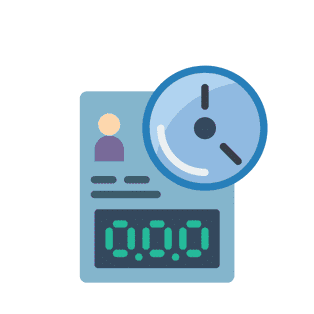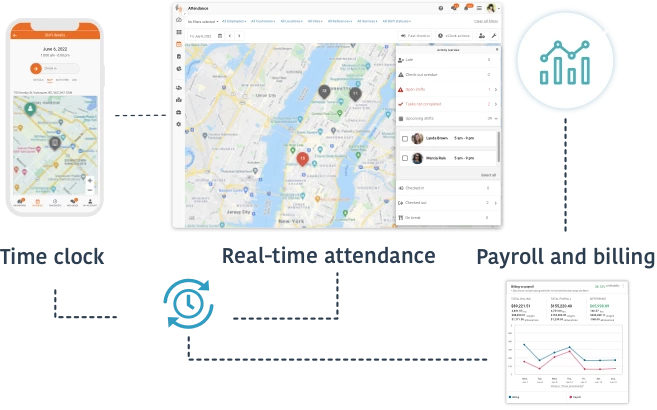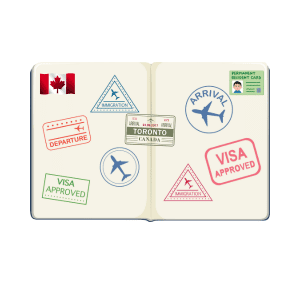Employee overtime tracking is an important aspect of workforce management. It ensures that employees are paid correctly for the hours they work. Overtime tracking also helps employers avoid costly labor law violations. In this blog post, we will focus on the role of employee scheduling software and time and attendance tracking in managing overtime.
How to Manage Overtime Tracking
THE IMPORTANCE OF TIME AND ATTENDANCE

One of the key components of overtime tracking is accurate time and attendance. This means that employers must have a system in place to accurately record the number of hours worked by employees. This can be done manually, such as with time cards or time sheets, or it can be done electronically. Electronic systems are generally considered to be more accurate and efficient than manual systems. They can automatically calculate the number of hours worked and eliminate the potential for human error. Errors in overtime tracking and/or payroll can be very costly to employers. According to a study from EY, On average, fixing a single payroll mistake costs a company $291. This is before overtime costs are considered.
EMPLOYEE SCHEDULING SOFTWARE
Employee scheduling software also plays an important role in managing overtime. Employers should have a clear and consistent scheduling process. An ideal process schedules employees to work the hours necessary to meet the needs of the business, while also avoiding unnecessary overtime. Schedulers can accomplish this with the help of employee scheduling software. Celayix, for example, can automatically create schedules based on the availability of employees and the needs of the business.
One way to avoid unnecessary overtime is to schedule employees to work a set number of hours per week. This can be done by setting a cap on the number of hours that an employee can work per week. Employers also often set a target number of hours that an employee should work per week. This can help to ensure that employees are not overworked, which can lead to burnout and decreased productivity. Here at Celayix, we help employers and schedulers manage this through our rules-based engine. They can create rules that specify the number of hours per worker, or rules specifically around overtime. As managers create schedules, Celayix will suggest an alternative employee if overtime is assigned accidentally.
OTHER WAYS TO MANAGE OVERTIME TRACKING
Another way to avoid unnecessary overtime is to ensure that employees are scheduled to work during their most productive hours. This can be done by scheduling employees based on their individual preferences and needs. For example, some employees may prefer to work early in the morning. Others may prefer to work later in the evening. By taking these preferences into account, employers can ensure that employees work during the hours when they are most productive.
In addition to scheduling employees to work during their most productive hours, employers can also use flexible scheduling options to help manage overtime. For example, some employees may be willing to work overtime in exchange for more flexible scheduling options, such as the ability to work from home or to have more control over their work schedule. This can include shift bidding and/or self-scheduling. Employers can also use flexible scheduling options to help manage unexpected absenteeism, such as when an employee is out sick or on vacation.
Overtime Tracking and Payroll

Another important aspect of employee overtime tracking is ensuring that employees are paid correctly for the overtime hours that they work. Employers must comply with the laws and regulations governing overtime pay, which vary by state and by country. In the United States, for example, non-exempt employees are entitled to overtime pay at a rate of one and a half times their regular rate of pay for any hours worked over 40 hours in a workweek. Employers must also keep accurate records of the hours worked by each employee, as well as the overtime pay that they have received.
With Celayix, overtime is tracked and rates can be set by the employer based on their own policies. Payroll information is then generated directly from the time and attendance information through automated attendance matching. This data can be sent directly to your payroll provider, or exported to a CSV file if necessary.
In conclusion, employee overtime tracking is an important aspect of managing a workforce. It ensures that employees are paid correctly for the hours they work, and it helps employers avoid costly labor law violations. Employers can manage overtime through accurate time and attendance tracking, effective employee scheduling, and the use of flexible scheduling options. Employers must also ensure that they comply with the laws and regulations governing overtime pay, and they must keep accurate records of the hours worked by each employee, as well as the overtime pay that they have received.
If you’d like to learn more about how Celayix can help with overtime tracking, get in touch today!





